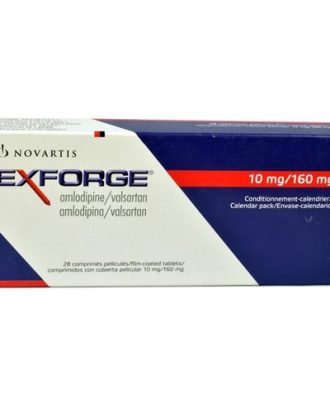Olmezest H (Tab) 20mg
৳ 8.52
Indications
Therapeutic Class
Pharmacology
Hydrochlorothiazide inhibits the reabsorption of Na in the distal tubules causing increased excretion of Na and water including K and hydrogen ions.
Olmesartan blocks the vasoconstrictor effects of angiotensin II by selectively blocking the binding of angiotensin II to the AT1 receptor in vascular smooth muscle. Its action is therefore independent of the pathways for angiotensin II synthesis.
An AT2 receptor is also found in many tissues, but this receptor is not known to be associated with cardiovascular homeostasis. Olmesartan has more than a 12,500-fold greater affinity for the AT1 receptor than for the AT2 receptor.
Blockade of the renin-angiotensin system with ACE inhibitors, which inhibit the biosynthesis of angiotensin II from angiotensin I, is a mechanism of many drugs used to treat hypertension. ACE inhibitors also inhibit the degradation of bradykinin, a reaction also catalyzed by ACE. Because olmesartan medoxomil does not inhibit ACE, it does not affect the response to bradykinin. Whether this difference has clinical relevance is not yet known.
Blockade of the angiotensin II receptor inhibits the negative regulatory feedback of angiotensin II on renin secretion, but the resulting increased plasma renin activity and circulating angiotensin II levels do not overcome the effect of olmesartan on blood pressure.
Dosage & Administration
The usual recommended starting dose of Olmesartan Medoxomil is 20 mg once daily when used as monotherapy in patients who are not volume-contracted. For patients requiring further reduction in blood pressure after 2 weeks of therapy, the dose may be increased to 40 mg. No initial dosage adjustment is recommended for elderly patients, for patients with moderate to marked renal impairment (creatinine clearance<40 ml/min) or with moderate to marked hepatic dysfunction.
Hydrochlorothiazide is effective in doses between 12.5 mg and 50 mg once daily.
Replacement Therapy: Olmesartan & Hydrochlorothiazide may be substituted for its titrated components.
Dose Titration by Clinical Effect: The dose of Olmesartan & Hydrochlorothiazide tablet is one tablet once daily. More than one tablet daily is not recommended. Olmesartan & Hydrochlorothiazide tablet may be administered with other antihypertensive agents. A patient whose blood pressure is inadequately controlled by Olmesartan or Hydrochlorothiazide alone may be switched to once daily Olmesartan & Hydrochlorothiazide tablet. Dosing should be individualized. Depending on the blood pressure response, the dose may be titrated at intervals of 2-4 weeks. If blood pressure is not controlled by Olmesartan alone, Hydrochlorothiazide may be added starting with a dose of 12.5 mg and later titrated to 25 mg once daily.
If a patient is taking Hydrochlorothiazide, Olmesartan may be added starting with a dose of 20 mg once daily and titrated to 40 mg, for inadequate blood pressure control. If large doses of hydrochlorothiazide have been used as monotherapy and volume depletion or hyponatremia is present, caution should be used when adding Olmesartan or switching to Olmesartan & Hydrochlorothiazide tablet, as marked decreases in blood pressure may occur. Consideration should be given to reducing the dose of Hydrochlorothiazide to 12.5 mg before adding Olmesartan. The antihypertensive effect of Olmesartan & Hydrochlorothiazide is related to the dose of both components over the range of 10 mg/12.5 mg to 40 mg/25 mg
Interaction
Olmesartan Medoxomil: No significant drug interactions were reported in studies in which Olmesartan Medoxomil was coadministered with hydrochlorothiazide, digoxin or warfarin in healthy volunteers.
Hydrochlorothiazide: When administered concurrently the following drugs may interact with thiazide diuretics: alcohol, barbiturates or narcotics, antidiabetic drugs, other antihypertensive drugs, cholestyramine and colestipol resins, corticosteroids, pressor amines (e.g. Norepinephrine), skeletal muscle relaxants (e.g. Tubocurarine), lithium, NSAIDs etc.
Contraindications
Side Effects
Pregnancy & Lactation
Pregnancy Categories C (first trimester) and D (second and third trimesters). This combination drug should not be used during pregnancy.
Lactation: It is not known whether Olmesartan is excreted in human milk, but Olmesartan is secreted at low concentration in the milk of lactating rats. Thiazides appear in human milk. Because of the potential for adverse effects on the nursing infant, a decision should be made whether to discontinue nursing or discontinue the drug, taking into account the importance of the drug to the mother.
Precautions & Warnings
Use in Special Populations
Renal impairment: The usual regimens of therapy with Olmesartan & Hydrochlorothiazide tablet may be followed provided the patient’s creatinine clearance>30 ml/min. In patients with more severe renal impairment, loop diuretics are preferred to thiazides, so this combination tablet is not recommended.
Patients with Hepatic Impairment: No dosage adjustment is necessary with hepatic impairment.
Paediatric population: The safety and efficacy of Olmesartan & Hydrochlorothiazide in children and adolescents below 18 years has not been established. No data are available.






Reviews
There are no reviews yet.